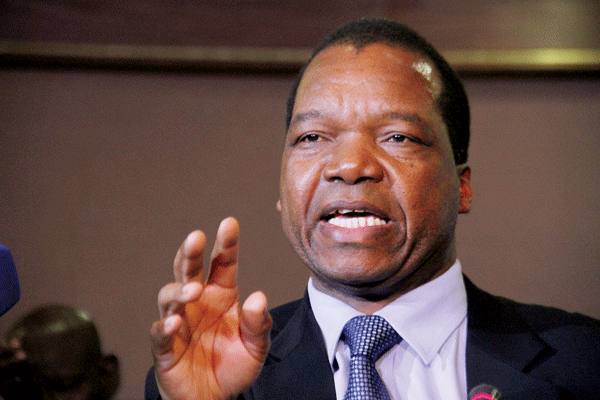
BY FIDELITY MHLANGA
ZIMBABWE’s banks may face hurdles in meeting new minimum capital thresholds by year end, analysts have warned. In a show of lack of confidence in the local currency, the Monetary Policy Committee headed by central bank governor John Mangudya last week hiked banks’ minimum capital threshold to US$30 million for large indigenous commercial banks and all foreign banks, and US$20 million for merchant banks, building societies, development banks, finance and discount houses.
Deposit-taking microfinance banks should raise US$5 million while capital requirements for credit only microfinance institutions pay in US$25 000.
Using the current interbank rate, this means banks are now expected to have $550 million (commercial banks) and $340 million, for merchant banks.
This was is an increase from the initially set level of $200 million for commercial banks.
Economist John Robertson warned that banks that fail to meet the required threshold would fold.
“The higher capital requirement might mean that some banks have to merge with other banks at the end of the year, or close down if they cannot raise enough capital,” Robertson said.
“The next Monetary Policy needs to impose discipline on the banks and bureaux de change to ensure that they do not trade foreign currency at black market rates. If the black market is allowed to continue, inflation will keep on going up and we will have no chance of generating acceptable investment conditions.
- Chamisa under fire over US$120K donation
- Mavhunga puts DeMbare into Chibuku quarterfinals
- Pension funds bet on Cabora Bassa oilfields
- Councils defy govt fire tender directive
Keep Reading
The Monetary Policy should generate the stability needed to encourage investment.”
Stockbroking firm IH Securities said the pegging of the minimum capital requirements in US dollars was a positive development as banks would revisit their balance sheets and credit risk models to ensure that they build loan books with quality assets, but warned it could result in liquidity constraints for the productive sector.
“However, in the short term, it is likely to result in liquidity constraints for the productive sector. Without the harmonisation of policies between the monetary and fiscal policies, we are likely to witness further currency depreciation and runaway inflation. Thus, finding an equilibrium between ensuring there is enough liquidity to stimulate production, whilst remaining within range of the target inflation remains critical to returning the economy to productivity,” IH said.
Confederation of Zimbabwe Retailers president Denford Mutashu said the monetary policy expected to be unveiled soon must unpack measures to control runaway inflation, currently at 521%.
“The MPR should sustain month-on-month inflation stability and foreign currency exchange rate stabilisation. Confidence restoration remains key while equally strengthening our productive sector capacity. Retailers and wholesalers are not happy with the current pricing and operating distortions which is pro-informal trade. Informal traders are mopping all the cash and the forex on the market as the law has continued to punish formal players by refusing them to accept payment in foreign currency while 90% of informal traders who now constitute 70% of the sector’s business are easily accepting Zimdollar cash, US dollar, pula, and rands etc. The structure of the economy is skewed and the sooner we expend efforts to correct that, the better. Products shortages from local suppliers and manufacturers have increased lately,” said Mutashu.
The 2019 monetary policy statement saw the establishment of the inter-bank foreign exchange market as well as the authorisation of bureaux de change to purchase foreign currency without limits.
As at December, 31 2019, an aggregate amount of US$1,5 billion had been traded on the interbank market, the monetary policy committee revealed last week.
Last year’s monetary policy also gave birth to the RTGS dollar for domestic transactions aimed at eliminating the existence of the multi-pricing system and charging of goods and services in foreign currency within the domestic economy.
As of end of last year, $1,1 billion worth of coins and notes were now in circulation and the treasury boss also indicated that higher denomination notes would be released to the market in the next few months.
Total banking sector deposits were at $34,5 billion as at December 31, 2019.











